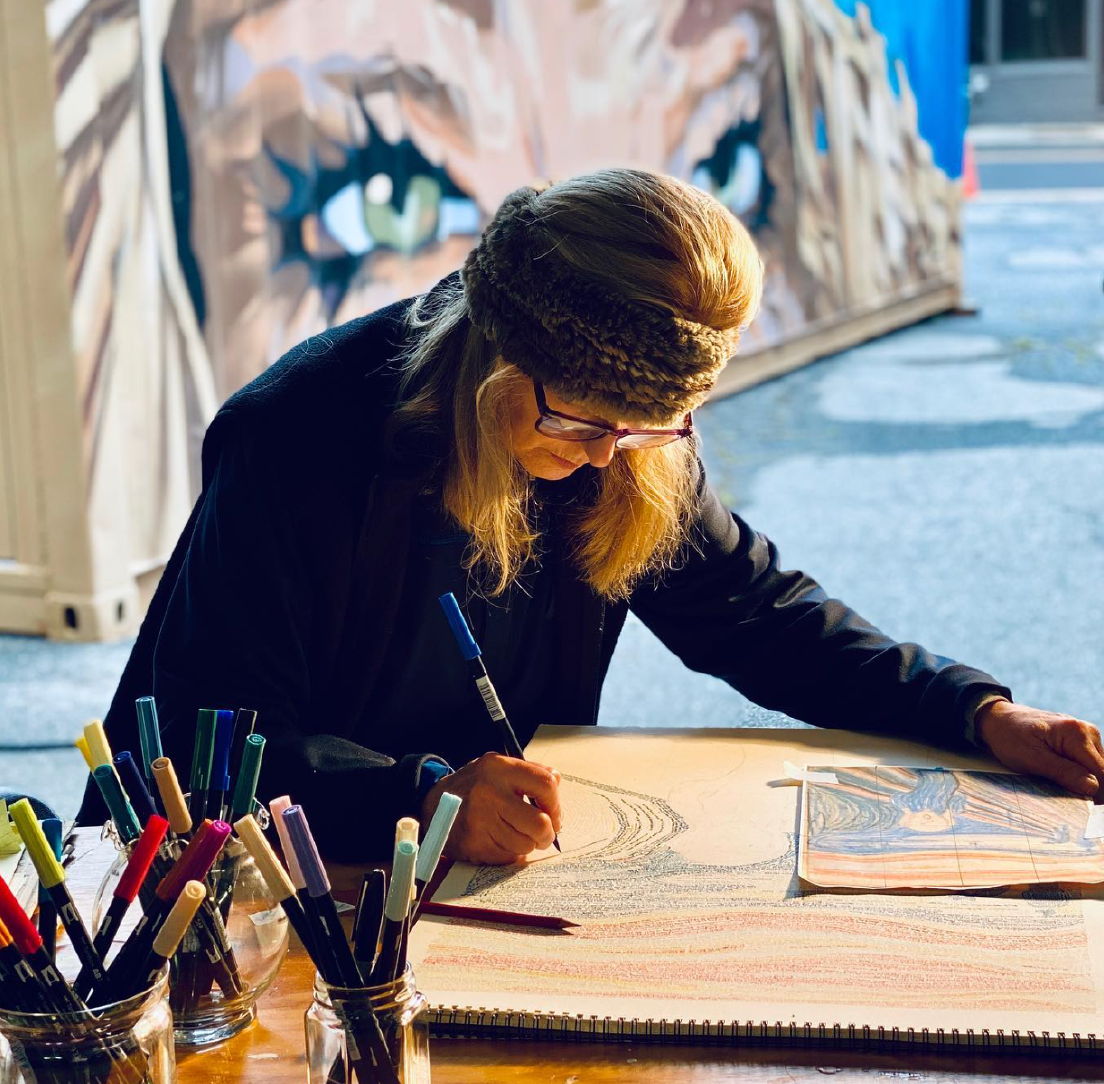SUZANNE BRENNAN FIRSTENBERG
About the Artist
SUZANNE BRENNAN FIRSTENBERG
About the Artist
I grew up in the shadow of Mt. Rushmore, in western South Dakota. After living in Kentucky and Puerto Rico, I earned an MBA, worked in the pharmaceutical industry, and finally arrived in Washington, DC, to a job in the United States Senate. For balance, I volunteer with the terminally ill.
I accidentally discovered that I was an artist during an adult ceramics class. Unable to center my clay, I watched as the bust of a woman emerged at my hands. I immediately began learning materials and methods — painting, drawing, welding, neon-tube bending, stone carving — taking classes wherever I could.

I want to challenge what you think.
Scroll through your news feed, that’s where my topics incubate. I choose those that are twisting our society in knots, the ones that feel most intractable. Then I do a deep dive: books, research, interviews. I explore at the core to figure out what needs to change.
Then the fun begins. Rather than restricting myself to the language of just one medium, I use whatever material and methods best help me communicate: buffalo skulls, paper airplanes, concrete rubble, video walls, shipping containers, prison cell audio…whatever it takes.
My installations attract the viewer with beautiful aesthetics, then slowly, maddeningly, reveal underlying hypocrisies, offer alternate lenses, encourage deeper understanding…challenge what you think.
Unlike other artists, you won’t visually recognize my style, you will feel it, viscerally.
Then the fun begins. Rather than restricting myself to the language of just one medium, I use whatever material and methods best help me communicate: buffalo skulls, paper airplanes, concrete rubble, video walls, shipping containers, prison cell audio…whatever it takes.
My installations attract the viewer with beautiful aesthetics, then slowly, maddeningly, reveal underlying hypocrisies, offer alternate lenses, encourage deeper understanding…challenge what you think.
Unlike other artists, you won’t visually recognize my style, you will feel it, viscerally.

Do you want to stay in contact with me?
Hear my latest news. Learn about opportunities to get involved with future projects.
(I'll only contact you when it matters.)




